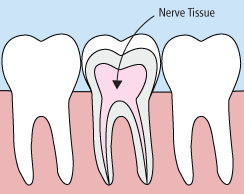Microscope-Assisted Root Canals
Dental Operating Microscope
A dental operating microscope enhances and facilitates all phases of root canal treatment by magnifying the soft and hard tissue. It can make even the smallest piece of tooth or gum clearly visible. This allows Dr. Klimek to diagnose problems in the earlier stages of a disease process, perform procedures at a greater level of precision, and reduce the need for retreatment.
Benefits of Dental Operating Microscopes
Improved View: Dental operating microscopes make minute details and fine structures clearly visible, which enables Dr. Klimek to visualize high-contrast and natural images. Better vision is the key to improving the quality of the examination and the root canal treatment. The illumination puts light where it is needed, all the way down to the root canals of the tooth.
Improved Imaging: A picture is worth a thousand words. Images captured using a dental operating microscope during an examination are an excellent communication and education tool for helping you to understand your diagnosis better, and why root canal treatment may be necessary. It facilitates a step-by-step explanation which creates a high level of trust between you and Dr. Klimek. After all, seeing is believing.
Our use of a dental operating microscope is just one part of our commitment to providing you with the highest level of root canal treatment and the best, longest-lasting results.

Dental Health and Root Canals
In the past, if you had a tooth with a diseased nerve, you would probably lose that tooth. Today, with a special dental procedure called root canal treatment, your tooth can be saved. Root canals are a relatively simple procedure involving one to three office visits. Best of all, having a root canal when necessary can save your tooth and your smile!
What is the purpose of a root canal?
A tooth’s nerve is not essential to a tooth’s health and function after the tooth has emerged through the gums. Its only function is sensory: to provide the sensation of hot or cold. The presence or absence of a nerve will not affect the day-to-day functioning of the tooth.
When a tooth is cracked or has a deep cavity, bacteria can enter the pulp tissue and germs can cause an infection inside the tooth. If left untreated, an abscess may form.
If the infected tissue is not removed, pain and swelling can result. This can not only injure your jawbones, but it’s detrimental to your overall health. Without the proper treatment, your tooth may have to be removed.
What are the signs that a root canal is needed?
Teeth that require root canal therapy are not always painful. However, signs you may need a root canal include severe toothache, pain upon chewing or application of pressure, prolonged sensitivity or pain in response to hot and cold temperatures, a dark discoloration of the tooth, and swelling and tenderness in the nearby gums. If you experience any of these symptoms, contact our office.
What happens during a root canal?
Root canal treatment entails one to three visits. During treatment, a general dentist or endodontist (a dentist who specializes in problems with the nerves of the teeth) removes the affected tissue. Next, the interior of the tooth will be cleaned and sealed.
Finally, the tooth is filled with a dental composite. If your tooth had extensive decay, the doctor may suggest placing a crown to strengthen and protect the tooth from breakage. As long as you continue to care for your teeth and gums with regular brushing, flossing, and checkups, your restored tooth can last a lifetime.



